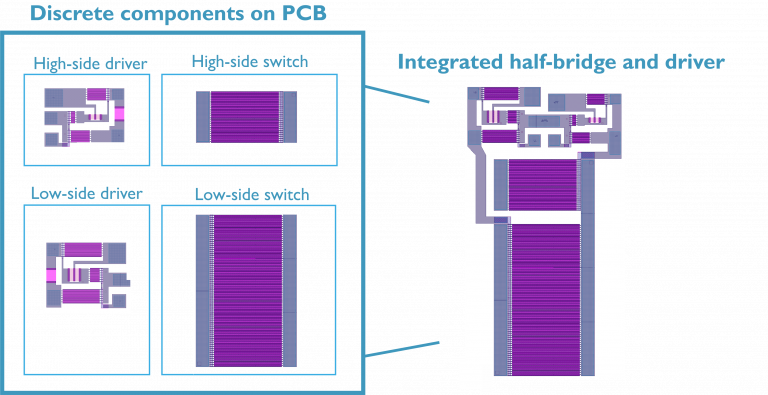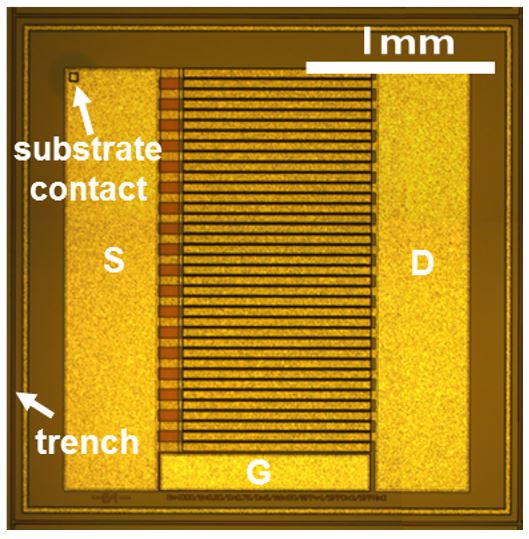Imec researchers have combined GaN-on-SOI technology with trench isolation for the monolithic integration of GaN-based devices. The aim has been to isolate the devices by etching a trench through GaN and Si into the SiO2 buried layer, and as so enable the monolithic integration of GaN circuits, such as half-bridges.
If you are new to the GaN-IC technology, you can benefit from the tutorial slides in PDF format.
In addition, here you can find:
imec GaN-IC Technology | |
|---|---|
Technology Characteristics | In this technology, a GaN layer is epitaxially grown on a 200mm SOI wafer (Si(100)/SiO2/Si(111)) using metal-organic chemical vapor deposition (MOCVD). The stack consists of an AlN nucleation layer, an (Al)GaN buffer layer, a GaN channel layer, an AlGaN barrier layer and a Mg-doped p-GaN layer. Delicate strain engineering is performed to control the stress built up in the wafer during growth, resulting in a GaN-on-SOI wafer with controlled warpage and good mechanical strength. Furthermore, e-mode p-GaN HEMTs can be processed and TiN/p-GaN stacks used for the gates. |
Special features | – Integrate multiple transistors on a single IC using trench isolation. – Save package cost by packaging one instead of multiple devices – Reduce system parasitic inductance. To use the full potential of the fast switching speed of GaN power devices, the drivers should be co-integrated to lower the parasitic inductance. Further functionality can be added through the low-voltage logic and analog switches, the high-ohmic and low-ohmic resistors and the integrated MIM-capacitors. |
Application area | High power switching and power conversion: 100V and 650V
|
Design kits version | v.1.4.2 at 100V v.2.2.3 at 650V |
Front-end/back-end tools | Cadence |
Verification tools | DRC Calibre
|
Library | The PDK includes process documentation, library devices, layout guidelines for custom design, verification and models. – Low-ohmic and high-ohmic resistors – Metal/oxide/metal capacitors – Low voltage logic devices – Metal/insulator/metal |
Typical Turnaround time | Approximately 26 weeks since MPW submission deadline, it includes already 6 weeks of DRC iterations |
Process options | Until Cu/Ni/Au RDL for wire-bonding or until CuRDL/CuPillars to mount directly on PCB. |



